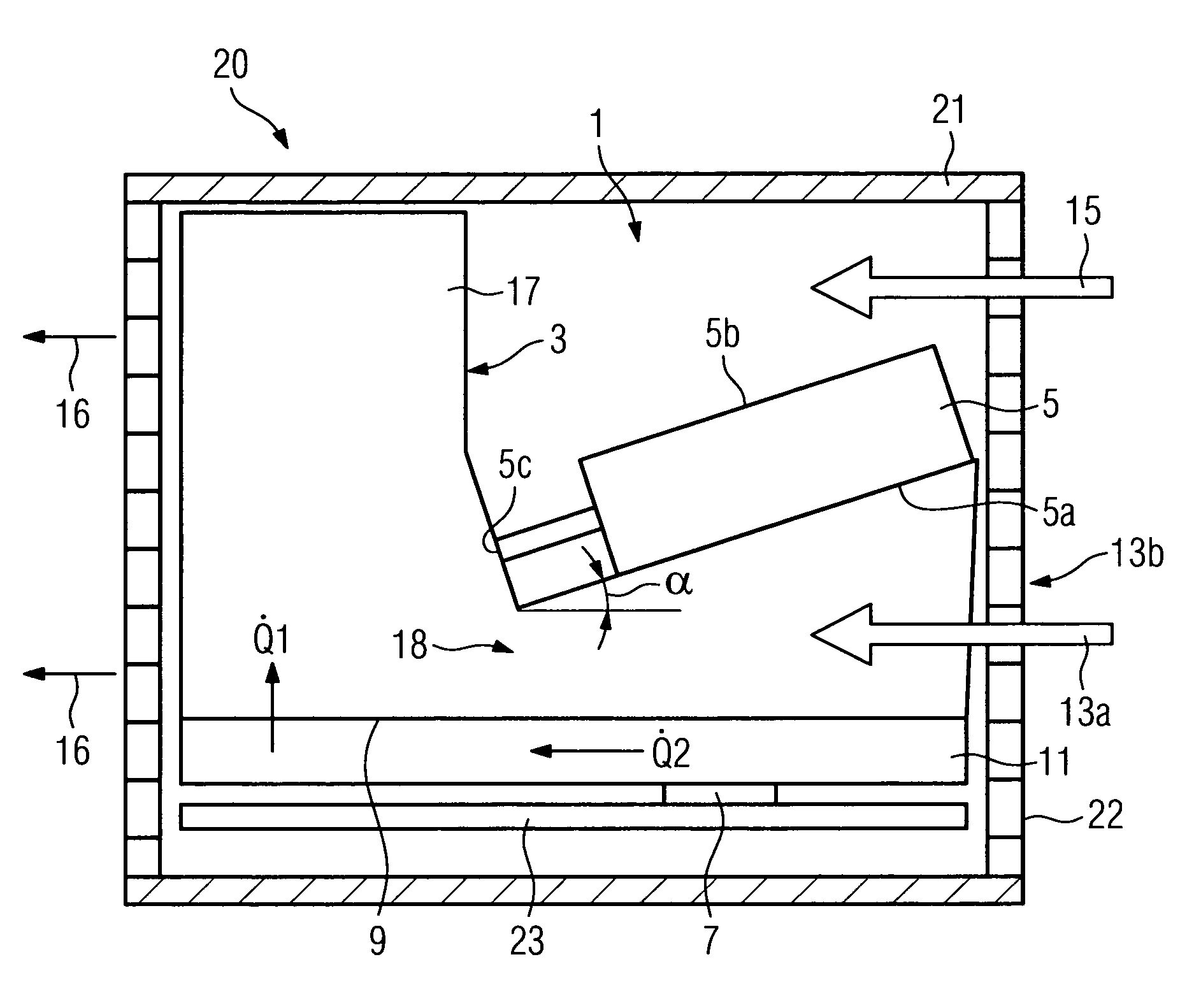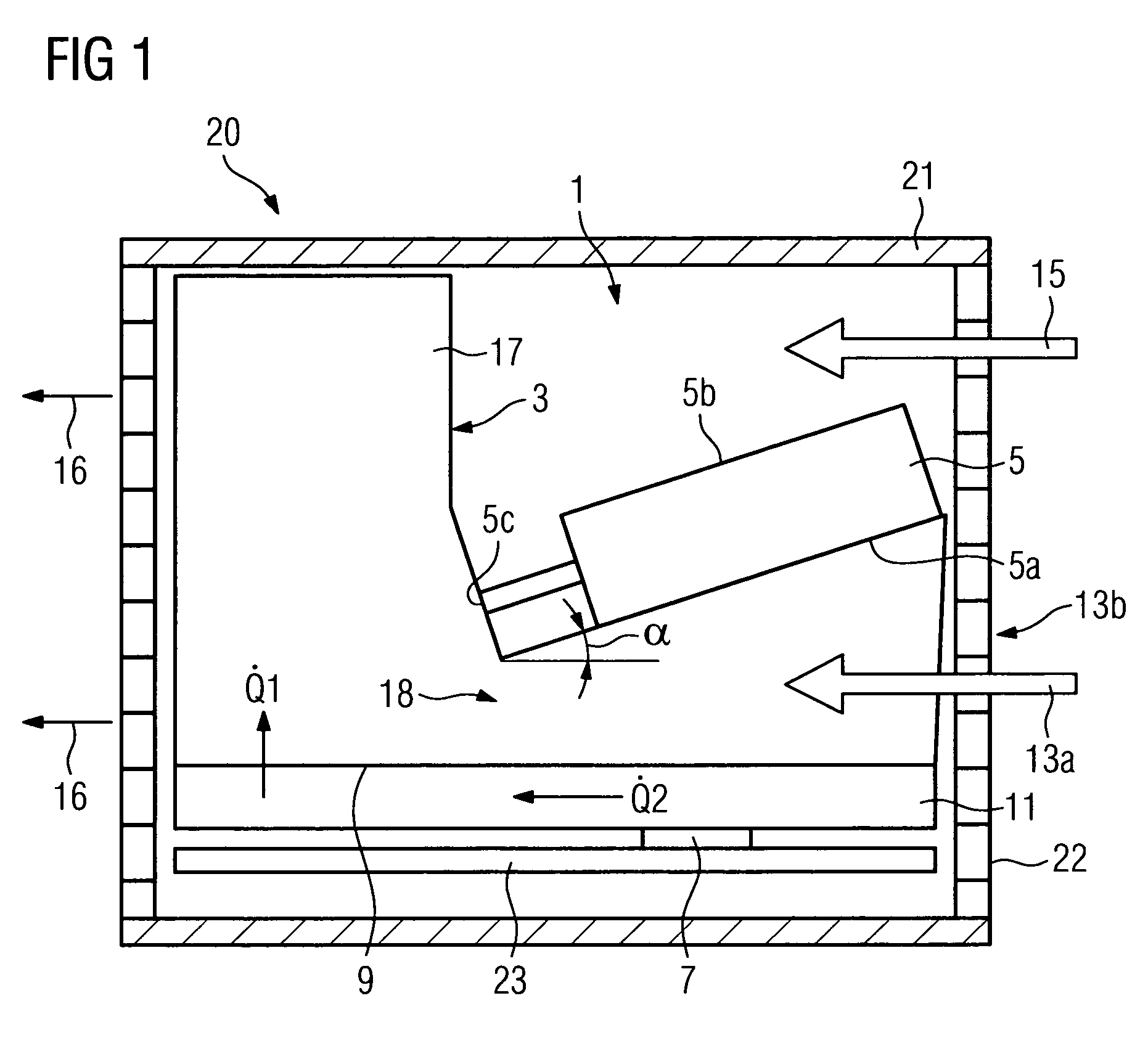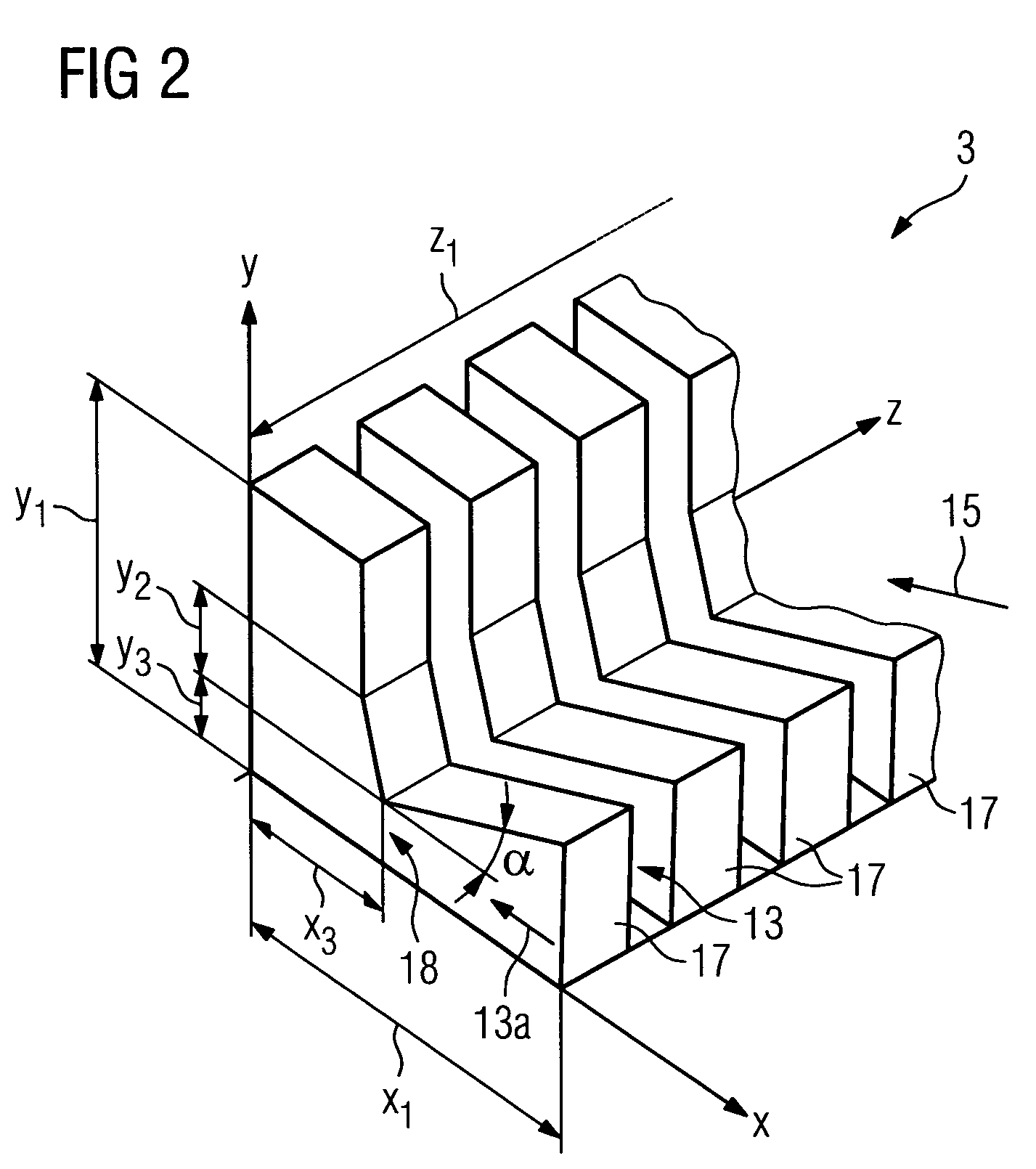Cooling facility for cooling a component
a cooling facility and component technology, applied in the direction of insulated conductors, power cables, semiconductor/solid-state device details, etc., can solve the problems of increasing the space required for known arrangements, increasing the clock frequency of microprocessors, and increasing the power dissipation of microprocessors, so as to improve cooling performance and efficient cooling
- Summary
- Abstract
- Description
- Claims
- Application Information
AI Technical Summary
Benefits of technology
Problems solved by technology
Method used
Image
Examples
Embodiment Construction
[0025]In accordance with FIG. 1 a module 20 with a cooling facility 1 arranged within a housing 21 is shown viewed from the side without a side cover. The cooling facility 1 features a heat sink 3 and a jet cooler 5 with an underside 5a and an upper side 5b. The heat sink 3 is arranged on a base plate 11. This base plate 11 is thermally connected to a component 7. The component 7 is arranged on a circuit board 23. Microprocessors of CPU modules are usually cooled with these types of cooling facilities 1. The heat sink 3 is essentially embodied as a cuboid shape with a plurality of cooling fins 17 and a recess for accepting the jet coolers 5 within the space which is formed by the maximum three-dimensional measurements of the heat sink. The cooling fins 17 which are arranged in a section for a main flow 13a underneath on the underside 5a of the jet cooler 5 are at an angle α of 20 degrees to the base plate 11 or to the surface 9 of the heat sink 3. The jet cooler 5 is arranged on the...
PUM
 Login to View More
Login to View More Abstract
Description
Claims
Application Information
 Login to View More
Login to View More - R&D
- Intellectual Property
- Life Sciences
- Materials
- Tech Scout
- Unparalleled Data Quality
- Higher Quality Content
- 60% Fewer Hallucinations
Browse by: Latest US Patents, China's latest patents, Technical Efficacy Thesaurus, Application Domain, Technology Topic, Popular Technical Reports.
© 2025 PatSnap. All rights reserved.Legal|Privacy policy|Modern Slavery Act Transparency Statement|Sitemap|About US| Contact US: help@patsnap.com



